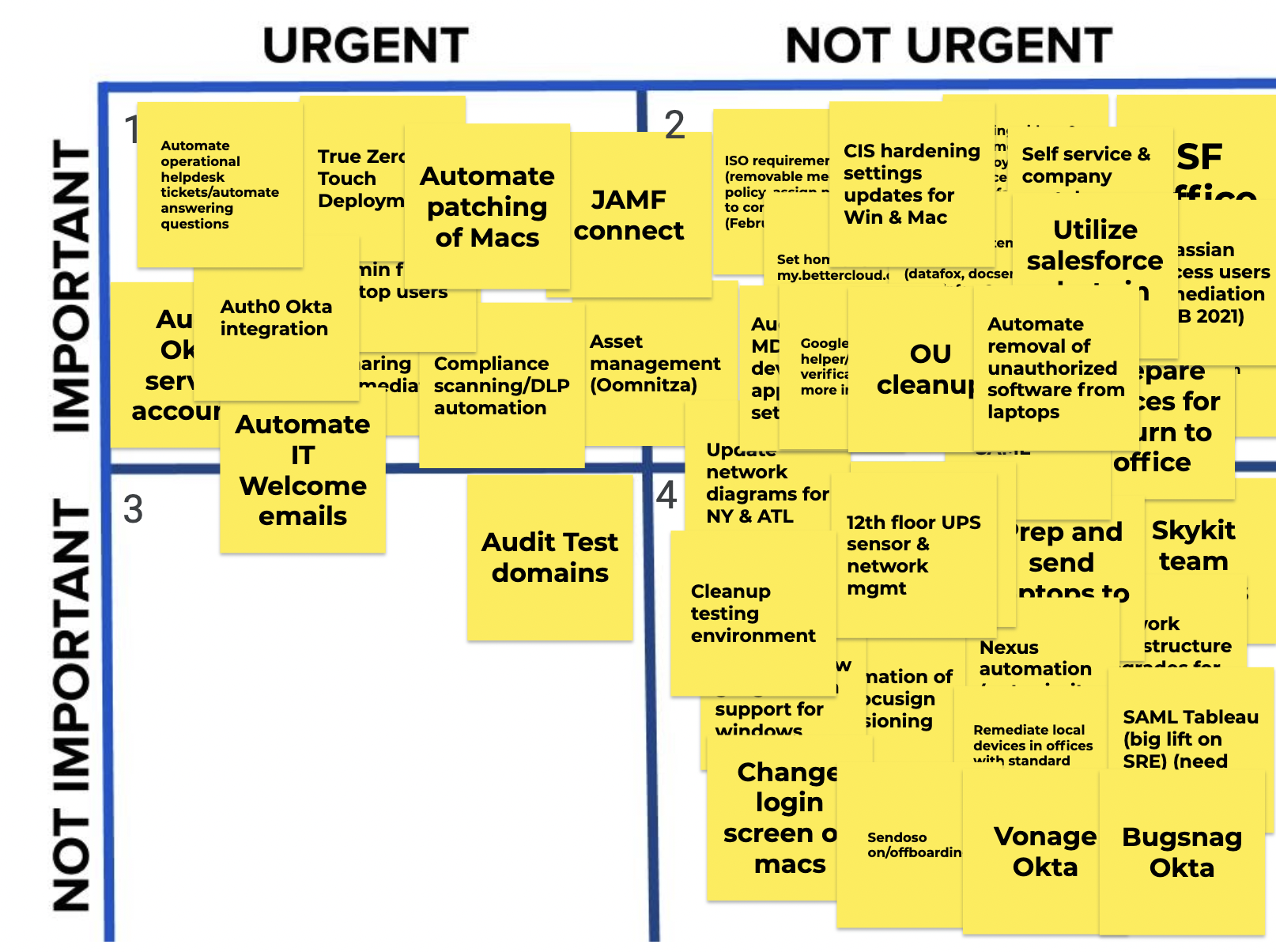How We Built a Strategic IT Roadmap (Plus 4 Ways You Can Too)
May 27, 2021
4 minute read

Something I have heard a lot throughout my career was that IT was always considered a cost center, and that being considered a partner to the business was a real struggle. The frank truth is that at most companies, your departmental stakeholders may need to be convinced that IT can and should be included in strategic planning conversations.
For anyone working in an IT department, it might seem obvious to you that your work is important. I mean, you’re doing things right? Computer things! But how do you translate your operational work into meaningful business impact that can be seen and felt by the organization?
A strategic IT roadmap starts with getting transparency into company OKRs—and understanding how IT can support them
At BetterCloud, we have been using OKRs—that is, objectives and key results—as a framework to define and measure outcomes. An objective is what you are trying to achieve, while the key results are the how. Internally, we use a tool called Ally to make them visible across the organization. Every single employee at BetterCloud can log in and see the status of every department’s OKR work.
Having that radical transparency has allowed everyone to visibly see how different parts of the business are doing. Seeing other department’s goals can allow an IT team to step back and say, OK, team Y is trying to achieve X this year: What can we do to support them in this, or help them achieve that result more quickly?
Make sure you’re working on the right things: prioritize your backlog and understand the “why”
When I started at BetterCloud, we had this huge backlog of projects we wanted to work on, but not necessarily a great way to prioritize them. I wanted to make sure that we focused on the right stuff, and I also wanted to ensure that there was buy-in from the team. To me, it’s really critical that the team doing the work understands why they’re doing it and is invested in the end result. This makes it a true team effort, and the result is that the team holds each other more accountable.
In order to prioritize our backlog, I took a look at our Jira backlog alongside the high-level projects we wanted to achieve, wrote every last thing on a Post-it Note, and then as a team we voted on how important or urgent the task was. For this we used a Jamboard link (your team can use whatever whiteboard tool you feel comfortable with—there are lots of them, like Miro and Mural). To prioritize, we used the Eisenhower Matrix:

Once we had that, we took the items in “Important/Urgent” and “Important/Not Urgent” and sorted them into quarters so we started to have a clear look at what we’d be working on for the year. This was an effective and fun way for the team to be engaged and contribute to how we structured our roadmap for the year.
Map your IT work to company goals

Once we had that, my Senior IT Manager Brian Farrell and I could take a look at the list and see how our work could be tied into corporate growth strategies. For example, one of them is “Fanatical Community”—Brian and I are both really passionate about that. We have been members of the SaaSOps Community for seven or eight years, long before we ever worked at BetterCloud. It was a safe and welcoming learning environment for both of us, and I definitely want to keep contributing so that continues to be the case for many, many people.
Something we realized was, oh yeah, duh, as the internal users of BetterCloud, we can continue to push boundaries with the product and share our best practices back to the community! So that was a pretty easy way we saw our work tying back to an OKR.
How you can tie your IT work to company goals: 4 key recommendations
You, too, can start tying your work into your company’s goals. Here is what I recommend you start with:
- First, find out what your company’s growth strategies are! If you don’t know, ask someone. If they don’t know, ask someone else!
- Look at your team’s project backlog and Marie Kondo them. If something would be a “nice to have” but doesn’t necessarily have business value, consider dropping it.
- Reframe your operational work: Your job is not resetting people’s passwords; your job is to make their jobs easier from a technology standpoint. Your work helps them do their work better! If you can increase a team’s efficiency by a few percentage points, that could be a gamechanger for them.
- Make sure you’re gathering data, and know what “success” means to you and your team. Be ready to be able to explain that to your stakeholders, ideally with a nice dashboard.
If you’ve gotten this far—thank you for reading! I hope you take up the challenge to look at your work and begin to map it more strategically into your organization. Best of luck, and I’ll catch you at the SaaSOps community!
Related: In the latest episode of the SaaSOps Show, hear from our IT stars Justine and Brian as they discuss strategic roadmap planning and how they mapped their work to company growth strategies.







